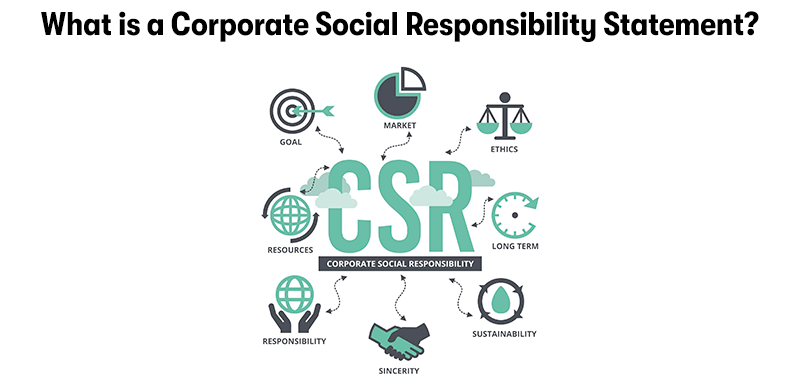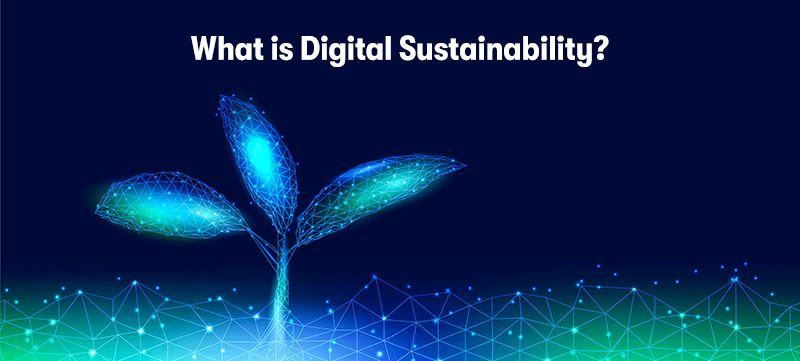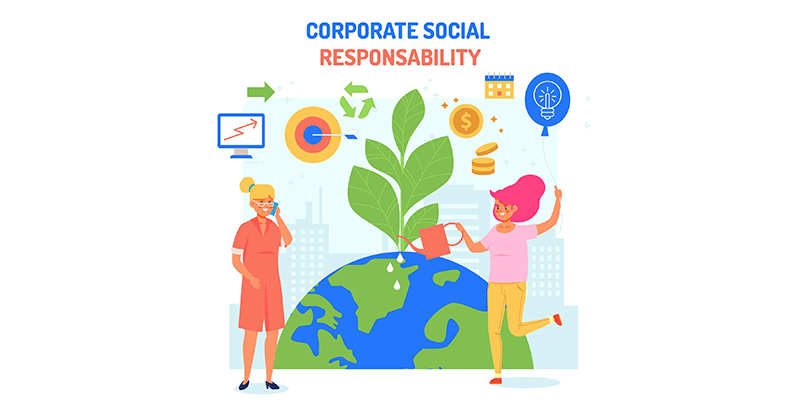How to Write a Corporate Social Responsibility Statement
In today's corporate landscape, where transparency and ethics play pivotal roles in shaping a company's identity, the importance of a well-crafted Corporate Social Responsibility (CSR) statement cannot be overstated.
As businesses increasingly recognise their influence on the environment, society, and the economy, articulating a clear and impactful CSR statement has become essential. This formal introduction aims to guide you through the nuanced process of writing a CSR statement that communicates your company's dedication to sustainable and ethical practices, resonates with stakeholders, and sets a foundation for meaningful action.
Whether you're a seasoned executive or a budding entrepreneur, understanding how to convey your CSR commitments effectively is crucial in navigating the path towards a more responsible and sustainable business model.
What is a Corporate Social Responsibility Statement?

A Corporate Social Responsibility Statement is a declaration by a company that outlines its commitment to operating in an ethical, sustainable, and socially responsible manner. This statement serves as a public commitment to the company's values and practices in areas such as environmental stewardship, social welfare, and governance (ESG). The CSR statement typically addresses how a company plans to:
Manage its environmental impact: This includes reducing carbon emissions, conserving resources, and implementing sustainable practices throughout its operations and supply chain.
Contribute to social welfare: Actions here can range from charitable giving and community engagement to improving labour practices and ensuring fair treatment of employees.
Uphold ethical governance: This involves maintaining high standards of honesty and integrity in all business dealings, including transparency, accountability, and fair trade practices.
The CSR statement is essential for several reasons:
Stakeholder Assurance: It assures customers, investors, employees, and the broader community of the company's commitment to responsible practices.
Brand Reputation: A strong CSR commitment can enhance a company's brand image and reputation, making it more attractive to customers and potential employees.
Regulatory Compliance: It helps companies comply with relevant laws and regulations regarding sustainability and social responsibility.
Risk Management: By proactively addressing social and environmental issues, companies can mitigate risks that could potentially harm their operations or reputation in the future.
Overall, a CSR statement is an integral part of a company's broader CSR strategy, reflecting its vision and approach to positively impacting society and the environment.
How Do You Write a Corporate Social Responsibility Statement?

Writing a Corporate Social Responsibility statement involves clearly articulating your company's commitment to ethical, sustainable, and socially responsible business practices. Here's a step-by-step guide to crafting a compelling CSR statement:
1. Define Your Core Values
Start by identifying the core values that define your business and its approach to social responsibility. These values should align with your company's mission and the expectations of your stakeholders, including employees, customers, suppliers, and the community.
2. Identify Key Focus Areas
Determine the specific areas where your company can make the most significant impact. Common focus areas include:
- Environmental sustainability (e.g., reducing carbon footprint, waste management)
- Social welfare (e.g., supporting local communities, charitable contributions)
- Ethical business practices (e.g., fair labour practices, anti-corruption measures)
- Economic responsibility (e.g., supporting local economies, fair trade)
3. Set Clear Goals and Objectives
Outline specific, measurable goals and objectives within each focus area. This could include commitments to reduce greenhouse gas emissions, initiatives to improve employee well-being, or programs to support local charities.
4. Describe Your Strategies and Actions
Detail your company's strategies and actions to achieve its CSR goals. This should include both ongoing efforts and new initiatives. Be as specific as possible, highlighting any partnerships, programs, or policies you have in place.
5. Emphasise Stakeholder Engagement
Explain how your company engages with stakeholders (e.g., employees, customers, suppliers, community members) to inform and enhance your CSR efforts. This could involve stakeholder surveys, community engagement initiatives, or NGO collaborations.
6. Commit to Transparency and Accountability
State your commitment to transparency and accountability in your CSR efforts. This might include regular reporting on your progress towards CSR goals, third-party audits of your CSR initiatives, or adherence to international CSR standards and frameworks.
7. Review and Revise Regularly
Acknowledge that your CSR statement is a living document that will evolve over time. Commit to regularly reviewing and updating your statement to reflect new challenges, achievements, and goals.
Example Structure of a CSR Statement:
- Introduction - Briefly introduce your company and its commitment to CSR.
- Core Values - State the core values that guide your CSR efforts.
- Focus Areas and Goals - Detail your key CSR focus areas and specific goals.
- Strategies and Actions - Describe the actions undertaken to achieve these goals.
- Stakeholder Engagement - Explain how you engage with stakeholders in your CSR efforts.
- Transparency and Accountability - Commit to being transparent and accountable in your CSR practices.
- Conclusion - Summarise your commitment and call to action for stakeholders to join you in your CSR journey.
Final Tips
Keep your statement concise, clear, and compelling. Use real-world examples and stories to illustrate your commitments.
Ensure your CSR statement is accessible to all stakeholders, for instance, by publishing it on your website.
Crafting a CSR statement is an opportunity to demonstrate your company's dedication to positively impacting the world, so approach it with sincerity and ambition.
What Should be Included in a CSR Statement?

A Corporate Social Responsibility statement should encapsulate a company's dedication to ethical, sustainable, and beneficial practices towards the environment, society, and the economy. Here's a breakdown of essential elements that should be included in a CSR statement:
1. Introduction to CSR Commitments
Overview: Briefly introduce the concept of CSR as it aligns with your company's mission and values.
Commitment Statement: State your commitment to CSR, highlighting the importance of social responsibility, sustainability, and ethical practices to your business.
2. Core Values and Principles
Company Values: Detail the core values guiding your business ethics and CSR approach.
Ethical Principles: Describe the ethical principles underpinning your company's operations, such as integrity, fairness, and respect for people and the environment.
3. Strategic Focus Areas
Environmental Sustainability: Outline commitments to reducing environmental impact, such as energy efficiency, waste reduction, and sustainable sourcing.
Social Welfare: Describe how your company supports social well-being, including community engagement, charitable giving, and enhancing employee welfare.
Economic Responsibility: Explain efforts to contribute positively to the economy, like supporting local businesses, fair trade practices, and ensuring economic inclusion.
Governance and Ethics: Highlight your approach to corporate governance, compliance, transparency, and ethical business practices.
4. Goals and Objectives
Specific Targets: List specific, measurable goals within each focus area (environmental, social, economic, governance).
Timeline: Provide a timeline for achieving these goals, demonstrating a clear path forward.
5. Implementation Strategies
Programs and Initiatives: Detail the programs, initiatives, and policies in place to achieve the CSR objectives.
Stakeholder Engagement: Explain how the company engages with stakeholders (employees, customers, suppliers, community) in its CSR efforts.
6. Monitoring and Reporting
Measurement and Evaluation: Describe the methods for measuring progress towards CSR goals, including any metrics or KPIs used.
Reporting Framework: Outline how and when the company will report on its CSR performance, possibly referencing adherence to international standards or frameworks (e.g., GRI, SASB).
7. Commitment to Continuous Improvement
Adaptation and Evolution: Acknowledge the need for ongoing evaluation and adaptation of CSR strategies to meet emerging challenges and opportunities.
Feedback Mechanism: Mention how the company encourages and incorporates stakeholder feedback to improve CSR efforts.
8. Conclusion
Reiteration of Commitment: Conclude by reiterating the company's dedication to CSR and the positive impact it aims to achieve.
Call to Action: Encourage stakeholders to support or participate in the company's CSR initiatives.
9. Contact Information
Provide details for stakeholders to learn more or get involved in CSR activities, fostering transparency and open communication.
A well-crafted CSR statement is not just a declaration of intentions but a roadmap guiding the company's actions towards achieving a sustainable and responsible business model. It should be clear, concise, and compelling, motivating all stakeholders to contribute to the CSR goals.
What Shouldn't a CSR Statement Include?

While a Corporate Social Responsibility statement is a vital document outlining a company's commitments to ethical, sustainable, and beneficial practices, there are certain things it should not include to maintain its integrity, relevance, and effectiveness. Here's what should be avoided:
1. Vague and Unsubstantiated Claims
Avoid making broad, vague statements about your company's CSR efforts without providing specific examples, actions, or results. Claims should always be backed by tangible evidence or clear plans.
2. Overly Ambitious Goals Without a Realistic Plan
While ambition in CSR is commendable, setting overly ambitious goals without a realistic and practical plan to achieve them can undermine your statement's credibility. Goals should be ambitious yet achievable, with clear steps outlined for their realisation.
3. Jargon and Complex Language
A CSR statement should be accessible to all stakeholders, including employees, customers, and the community. Using excessive jargon or overly complex language can alienate readers and obscure your message.
4. Marketing Speak Over Substance
The primary focus of a CSR statement should be on the company's commitments and actions towards social responsibility, not marketing or self-promotion. While it's important to communicate your efforts, the tone should be informative and sincere rather than promotional.
5. Ignoring Known Issues or Challenges
If your company faces specific social or environmental challenges, it's essential to acknowledge them rather than omit them from your CSR statement. Transparency about the challenges and your strategies for addressing them can enhance trust and credibility.
6. Sensitive or Confidential Information
Avoid including information that is sensitive, confidential, or could compromise your company's competitive advantage. While transparency is crucial, it should not come at the expense of security or privacy.
7. Irrelevant Information
Everything in the CSR statement should directly relate to your company's CSR activities and goals. Avoid diluting your message with information irrelevant to your CSR commitments.
8. Static or Outdated Information
A CSR statement should be a living document, regularly updated to reflect new initiatives, progress, and evolving goals. Avoid presenting the statement as a static document that does not change over time.
9. Overemphasis on Short-term Achievements
While it's important to celebrate short-term wins, a CSR statement should primarily focus on long-term commitments and strategies. Overemphasising short-term achievements can suggest a lack of a comprehensive, strategic approach to CSR.
10. Empty Promises or Greenwashing
Every claim or commitment in the CSR statement should be genuine and backed by concrete actions or plans. Avoid making empty promises or engaging in "greenwashing" (making misleading claims about your company's environmental efforts) to appear more responsible than you are.
A CSR statement should be a clear, honest, and practical document that outlines a company's CSR commitments and demonstrates a genuine and actionable plan for achieving them.
What is a Good Example of a Corporate Social Responsibility Statement?
XYZ Company Corporate Social Responsibility (CSR) Statement Example:
Our Commitment to Sustainability and Social Responsibility
At XYZ Company, we believe technological advancement should go hand in hand with environmental stewardship and social responsibility. Our mission to innovate for a greener tomorrow is deeply rooted in our commitment to ethical practices, environmental sustainability, social equity, and community welfare. We recognise our responsibility to our planet and its inhabitants and are dedicated to conducting our business in a way that reflects our values.
Core Values
Sustainability: Implementing eco-friendly innovations that reduce environmental impact.
Integrity: Conducting our business with honesty and transparency.
Equity: Ensuring fair and respectful treatment of all individuals.
Community Engagement: Actively contributing to the well-being of communities.
Strategic Focus Areas
Environmental Sustainability:
Goal: Reduce carbon emissions by 40% across all operations by 2030.
Action: Implement renewable energy sources and enhance energy efficiency in production facilities.
Social Welfare:
Goal: Support community development through education and technology access.
Action: Launch a global initiative to provide technology education to underprivileged communities.
Ethical Business Practices:
Goal: Achieve 100% supply chain transparency and fair labour practices by 2025.
Action: Partner with suppliers to ensure ethical standards and conduct regular audits.
Economic Responsibility:
Goal: Support local economies by sourcing 30% of materials from local suppliers by 2025.
Action: Develop partnerships with local suppliers and small businesses.
Implementation Strategies
Our CSR initiatives are integrated into every aspect of our operations, from product development to supply chain management. We engage with stakeholders through surveys, community forums, and partnerships to ensure our strategies align with community needs and environmental objectives.
Monitoring and Reporting
XYZ Company is committed to transparency and accountability. We will report annually on our CSR progress, adhering to global reporting standards, and continue to seek ways to improve our impact measurement methods.
Commitment to Continuous Improvement
We understand that CSR is a journey, not a destination. XYZ Company is committed to continuous improvement, adapting our strategies to meet emerging challenges and opportunities. We welcome feedback from all stakeholders as we strive to achieve our CSR goals.
Conclusion
XYZ Company is more than just a technology company; we are a community of innovators dedicated to making a positive impact on the world. We invite our employees, customers, suppliers, and community members to join us in this commitment to a sustainable and equitable future.
Contact Information
For more information about our CSR initiatives or to get involved, don't hesitate to contact our CSR department at [email protected].
This CSR statement serves as a comprehensive declaration of XYZ Company' dedication to CSR across various dimensions, including environmental sustainability, social welfare, ethical business practices, and economic responsibility. It exemplifies how a company can communicate its commitments, goals, and strategies in a clear, actionable, and transparent manner.
What is Digital Sustainability?

Digital sustainability refers to the practice of designing, implementing, and using digital technologies in a way that supports environmental, social, and economic sustainability goals. It encompasses a broad range of initiatives and practices aimed at reducing the negative impacts of digital technology on the planet while leveraging technology to support sustainable development. Digital sustainability focuses on several key areas:
Energy Efficiency
Reducing the energy consumption of digital infrastructures, such as data centres, networks, and devices, is a core aspect of digital sustainability. This includes using renewable energy sources to power these technologies and designing energy-efficient hardware and software.
Resource Efficiency
Minimising the use of physical resources in the production and disposal of digital devices and components. This involves promoting longer product lifecycles, encouraging the reuse and recycling of electronic waste (e-waste), and designing products that are easier to repair and recycle.
Reducing Carbon Footprint
Digital technologies contribute significantly to global carbon emissions, from the manufacturing of devices to the electricity consumed by data centres. Digital sustainability initiatives aim to measure, reduce, and offset these emissions, striving for carbon-neutral or even carbon-negative technology solutions.
Promoting Social Well-being
Leveraging digital technologies to address social challenges and improve the quality of life without exacerbating social inequalities. This includes ensuring access to digital technologies across different socio-economic groups and using digital tools to support education, healthcare, and community development.
Supporting Economic Sustainability
Ensuring the digital economy contributes positively to sustainable economic development by supporting jobs, innovation, and equitable growth. This involves ethical business practices, supporting local economies, and ensuring that the benefits of digital technologies are widely distributed.
Data Privacy and Security
Protecting the privacy and security of individuals' data as part of a sustainable digital world. This includes ethical data practices, robust data protection measures, and transparency about how data is collected, used, and shared.
Digital Inclusion
Ensuring equitable access to digital technologies and the internet, particularly for underserved and marginalised communities. Digital inclusion efforts aim to bridge the digital divide and ensure that all individuals can benefit from the opportunities offered by digital technologies.
Given the growing role of digital technologies in society and the economy, digital sustainability is increasingly recognised as a critical component of broader sustainability efforts. It calls for collaboration among governments, businesses, non-profits, and the public to develop and implement practices that ensure the long-term sustainability of our digital world.
Where Can You Learn More About Digital Sustainability?
At Purple Griffon, we offer an ITIL® 4 Specialist Sustainability in Digital & IT (SDIT) training course. This course will help you to:
- Understand how to use the ITIL guiding principles to deliver value by creating sustainable digitally enabled products and services.
- Effectively address VUCA challenges through sustainable strategies, procurement, products and practices.
- Obtain a practical grounding in the key principles of sustainability.
- Conduct a complete cost-benefit analysis identifying potential risks and opportunities using best practice guidance.
Final Notes on Writing a Corporate Social Responsibility Statement
In conclusion, we've explored the multifaceted nature of Corporate Social Responsibility and its significance in today's business landscape, from crafting impactful CSR statements to understanding digital sustainability's role in achieving broader sustainability goals.
A well-articulated CSR statement not only reflects a company's commitment to ethical, social, and environmental responsibilities but also guides its strategic actions towards a sustainable future. Moreover, digital sustainability emerges as a pivotal element, emphasising the responsible use of technology to support environmental, social, and economic well-being.
As businesses continue to navigate the complexities of sustainability, the integration of digital strategies within CSR initiatives offers a pathway to innovative solutions, ensuring a positive impact on society and the planet.


